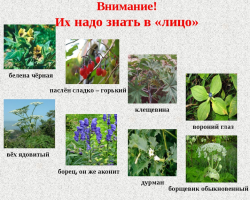Spider mites are microscopic (from 0.5 to 1 mm) parasites, which literally occupy indoor plants in a whole colony. Grabbing the places they love at the root (stems, leaves and even soil), these small parasites do not allow the plant to develop normally.
Content
- Why is a web tick dangerous for plants?
- How to find out that a web of a spider mite has started on indoor plants?
- Why does a spider mite appear? Prevention of a spider mite on indoor plants
- What indoor plants affects a web?
- How to deal with a spider mite?
- Pautinic tick
- Recommendations for preventing spider mites
- Video: Fighting a spider mite
If these uninvited “invaders” cannot be destroyed on time, then the plant will hurt, and maybe even die. Once upon a time, our grandmothers have come to fight pests only by folk methods, at the same time there are effective drugs developed by scientists for this.
Why is a web tick dangerous for plants?
- Spider mites feed on juice of the plant they captured. Adult individuals have proboscisby which they break through the outer layer of the stem at the root of the plant, injecting their liquid with enzymes there. And they immediately begin to actively engage in cell chloroplasts, destroying them intensively.
- After the ticks with their “friendly efforts” deplete the indoor flower, they immediately move to healthy individuals. If you notice traces of ticks in one of the flower pots, you should take a closer look at all the rest in the same room. Most likely, that these small colonialists have already settled in them.

How to find out that a web of a spider mite has started on indoor plants?
- The ticks are so tiny that you can see them only with a magnifying glass. In addition, they learned to excellently hide from the back of the leaves or in the ground.
- And to adult individuals, mimicry is inherent - they know how to merge with green leaves. In winter, females become reddish, and at this time they can be seen.
You can recognize spider mites by such signs:
- On light single punctures on leaflets - they can be considered if the sheet affected by insects is brought to the window. At first, single, every day they will grow more and more until, merging together, they will turn in brown stain.
- The leaflets change the color: from green, it turns into yellow or gray, with bronze or reddish shades.
- Leaflets and buds are deformed.
- The plant stops growing and developing. Due to the impaired photosynthesis, it does not receive the right amount of nutrients, and those that still act are poorly absorbed by the flower.
- If you do not destroy the parasites in time, then when the tick population will grow even more, and thin web will appear on the leaves, on their inner side. At the initial stage, this web of the net will glue between the veins of the leaves, and it is impossible to consider it with the naked eye. It will be seen when the leaves under the influence of the disease change their color, or already begin to dry out.
- Fasten ticks are fed, and at this time they change their skin. Against the background of black earth, they are similar to white dandruff, and these scales are easy to notice.
Why does a spider mite appear? Prevention of a spider mite on indoor plants
Each lover of indoor flowers from time to time faces an invasion of parasite ticks. To prevent their appearance and secondary infection, knowledgeable flower growers use preventive measures.

The reasons why spider mites start:
- The acquisition of a new plant, which was located at home among everyone else. And this cannot be done: you need to arrange quarantine for two weeks for two weeks. During this time, while the plant is separate from everyone else, it will become clear whether it is infected or not.
- Due to open space. In open windows and uninfilled loggias, ticks can fly from trees. And the tick can climb into the house with street shoes.
- Ticks can be in a purchased substrate or in the ground taken for transplanting in the yard.
- If the tub, pot, or the pallet was not used for a long time, and then, before planting the plant, it is poorly processed.
- Awakening from hibernation of females during the heating season. In eggs, ticks are quite long - about 5 years - the period of the range. Both females and the already laid eggs are only waiting for pores, when favorable conditions will come to life for their revival.
As preventive measures, lovers of indoor flowers should be inspected every day, since low humidity, coupled with high temperature, leads to an increase in the population of spider mites. Females do not live long, but each of them is capable of laying from 150 to 200 eggs for 2-3 weeks, which ripen at most 3 days.
What indoor plants affects a web?
- Absolutely every indoor plant can attack spider mites.
- But, nevertheless, between all the others, at first they will prefer to enjoy representatives of such families: marante, citrus fruits, curly and aroid.
How to get rid of ticks specific plants?
Orchid
- This delicate flower does not tolerate soaking, as it is harmful to stagnation of water in areas where leaf sinuses are located. Excessive waterlogging can lead to an orchid to a variety of putrefactive diseases.
- So that such a problem does not arise, it is enough to load the orchid along with the capacity in which it grows in water with an acaricide diluted in it. After the procedure, the flower should be well wetted with a soft cloth, especially in the sinuses of the leaves.
- For chemical treatment of the orchid, you can use gentle drugs - "Fitoverm" or Akarin. To moisturize the soil and simultaneously getting rid of ticks in water (0.5 l) add 5 g. "Fitosporin-M".
Rose
- The ticks most other colors like to settle on roses, so they should be observed most carefully. Just notice the first signs on the flower, without delay for a second, proceed to its salvation.
- Wash the rose with warm soapy water, and then wrap it with cellophane for a day. Then wash it with a warm shower and spray it with garlic infusion (see the recipe above). If the time is missed, the rose has settled with ticks is best processed "Neoron."

Balsam
- Fleshy balsamin stems and leaves also attract pests. If the ticks start it in the spring or summer period, rinse it with soap, and then process it "Sanmait."
- If the invasion of ticks occurs in autumn-winter time, then Balzamine will also need pruning. With a too large colony of insects, it is better not to fight, but simply to throw the flower.
Ficus
- Ticks love to settle on ficuses, so for preventive purposes, it should be sprayed from time to time with drugs. But if they already choose some kind of plant for themselves, then in this case it will be necessary to wipe its leaves with a soap solution and wrap it with a plastic bag.
- Let the ficus be simple in this form during the day, then it should be washed from soap and sprayed with infusion from calendula.
Violet
- You cannot do water procedures for violet, from excess moisture, its leaves can begin to rot.
- Having thoroughly examined the violet, you should remove the infected leaves from it, and then spray it twice "Fitoverm" - The second time after 10 days.
Drazen
- First of all, the plant should be washed with water with household or tar soap. In case of a neglected case, treat the dracao with a sparing chemical by type "Fitoverm".
- Green soap will become a great preventive means for the dracaena.
Anturium
- Just notice the appearance of ticks on the anthurium, immediately take up the removal of infected leaves. The second step should be the washing of the plant with soapy water. It is best to transplant it into another pot with a fresh substrate.
- If the ticks do not get out completely, process the flower "Akarin", and if this tool does not take the desired action, then use, for example, a chemical drug "Bi-58".
How to deal with a spider mite?
Only the sequence and methodology will help to completely get rid of annoying parasites. If systemic spraying is not used, they will develop resistance to poisons, and their population will grow further.

- Just find traces of ticks on one of the plants, you should immediately begin to spray with one of the selected drugs of absolutely all colors. If the infection has already gone too far, you will also have to process all the surfaces in your home.
- The affected and dry leaves cannot be left on plants - they should be urgently removed and taken out of the house, it is best to burn them.
- Indoor flowers must be “atoned” using a shower for this. The temperature can be set 40-48 ° C.
- There are flowers that cannot be washed with water, in this case, use steam bath. This is done like this: flowers are entered in the bathroom, and then hot water is launched for 20 minutes. Do such a manipulation 2 times a week.
Important tips:
- It is necessary to disinfect the pallets using boiling water for this.
- You should carefully study the instructions of the selected drug and strictly adhere to it when processing leaves and soil.
- If all these measures do not lead to the desired result, several increase the amount of poisonous substance. After processing with the solution, the infected copy must be tied with a plastic bag and put it in a shaded place.
- Need with special care process a flower pot, all surfaces of the window, as well as the plane near it with alcohol solution.
- In order for the parasites to completely disappear, flowers should be processed 1 time in 3 days. It will be better if you alternate different drugs for processing, or as an addition, use folk remedies.
- First aid depends on how affected by parasites. With timely detection, when there are still very few ticks, they can be removed from the flower mechanically, using wipe with a soft sponge soaked in soapy solution.
- At the early stage of the disease, plant and vegetable decoctions can also help; Wannered flowers with a strong smell are also perfect for washing infected plants.
- If strong infection by parasites still could not be avoided, it is best to use biological products; When web and the crown of the green crown appear, only chemicals will help.
When you see a complete victory over the parasites, be sure to transplant the flower into a new pot with a fresh substrate. And do not forget to take care of the root system: it is better to play it safe, and give it to the processing of one of the protecting biological products.
Pautinic tick
Funds killing ticks are chemical and folk.
What do you need to know about chemicals?
- Using chemicals, do not forget about a clear dosage and the number of spraying specified in the instructions. Chemical destroyers of ticks are divided into insectoacaricides and acaricides.
- To achieve the maximum effect, it will require the alternation of funds, which include different components. This must be done for the reason that many drugs after the second spraying are lost their properties. We can say that in ticks through a certain amount of processing the same tool, immunity is produced against it.
When using chemicals, such rules should be followed:
- In order to properly protect yourself from the effects of pesticides, you need to dress in a shirt with long sleeves, tie a scarf on your head, and protect your hands with rubber gloves.
- The chemicals should be sprayed in ventilated spaces - loggia, balcony, or in the yard - if the weather is warm.
Indoor flowers should be sprayed with means that have toxicity of the third or fourth class; Only street plants can be processed too poisonous. If the infection has already gone too far, the plant should be treated 4 times every 5-7 days.
- If, for example, to use the ticks to use " Akarin", Then this pesticular will act after 4 days, and it will protect the plant for 8-15 days. Orchids, roses and violets spray them.
- "Acture" You can spray any kind of indoor colors, but this drug is ineffective, it is better to use at an early stage of the disease.
- "Aktellik" It is necessary to spray plants in open space, as it is a very poisonous drug. At the same time, make sure that the aggressive chemical does not fall into the ground.

- "Anticleshch" You can poison different parasites, it will act within a week.
- A long -term drug (about 3 months) is an poisonous chemical "Apollo"which is able to sterilize adults of ticks.
- New colonies of ticks will not appear if you use the drug "Bi-58", the time of its action is 3 weeks.
- After 11 days it will work "Nessoran"but it will protect the plant for 50 days.
- Spraying the plant "Neoron", you can wait for a different effect of exposure - from 10 to 40 days. But neither humidity nor air temperature will become an obstacle for processing this drug: they can be completely different.
- "Oberon" You can destroy larvae and females, but the males are more tenacious - this pesticular is not able to completely lime. Valid for 20-25 days.
- From "Squelts" Pests will die in a week; Its validity period is from 80 to 85 days. The second time this drug should be treated with a sore plant a week later.
- When processing low -toxic "Fitoverm" The plant will be protected for twenty days. At a minimum, they will need to process the infected flower again.
- Since all ticks have a similar structure of the body, veterinary drugs like some flower growers are used "Neostomosan".
- To make the treatment most effective, alternate acaricides with water procedures.
In no case do not use “dichlophos”, as some “connoisseurs” advise: it will not hurt the ticks in any way, but people may become bad from it.
About folk remedies from spider mites
Folk remedies are effective only at the initial stage - at a time when it is still difficult to notice pests, and neither yellowed leaves nor spideries have yet appeared on the plant.
Folk recipes from spider mites:
- A liter of boiling water pour 50 g. garlic and 20 gr. onion husks. After cooling, add 3 gr. alcohol (vodka). Let the ingredients are infused for 5 days, then the infusion should be filtered and stir with water 1: 1. To wipe the sheet plates, use a cotton swab or soft washcloth. Suitable for indoor flowers, which have dense leaves.
- 20-25 gr. Soap (boron, sulfur or tar) to dilute in 1 liter of warm water, add ammonia (5-6 drops).
- 30 gr. Grind dandelion roots, boil in a liter of water, insist in a dark place for 2 days.
- 250 gr. Calendula flowers (fresh or dry) pour 1 liter of boiling water, withstand for several hours.
- 100 gr. Cut the chamomiles of the pharmacy, pour a liter of boiling water, let it brew for a day.
- 1-2 pcs. Cut cyclamen tubers, cook in a liter of water for half an hour. As it cools, you can process.
Recommendations for preventing spider mites
Some preventive actions can protect your indoor flowers from the invasion of tick colonies.

For this:
- When buying a new plant or transplanting the old, carefully inspect both the flower itself and the soil for the presence of parasites in them. Do this with a magnifying glass - so it will be easier for you to find them.
- For 2-3 weeks, place a new plant separately from all the others available in the house.
- Regularly inspect all your indoor flowers in order to immediately begin to save them from parasites.
- Do not be lazy to disinfect the substrate and expanded clay before planting the plant. To do this, a potassium permanganate or a forty -shirt -bumping in an oven diluted in water is suitable (the temperature must be set at 180 ° C). And you can also steam the land in a sieve on a gauze layer - for this you will need an hourly water bath. The soil should be enriched with yeast, or some other bacterial fertilizer.
- From time to time, carry out the processing of flowers using special fungicides for this. You can use it “Fitosporin”, “Alerin”, “Agatham”, “Bactofit” or similar to them.
- Wash the leaves of your plants under a warm shower regularly.
- Moisten the air with a humidifier or a spray gun.
- If you adhere to all these simple rules, you can protect your indoor plants as much as possible from the risk of dangerous pests on them, which are spider mites.
Useful articles on the site:
- Climate zones for frost resistance plants in Russia
- How to feed home plants correctly
- How and why pollinate plants manually
- Why dry the edges of the leaves in indoor plants: TOP-7 reasons
- Types of manure and its benefit for different plants







